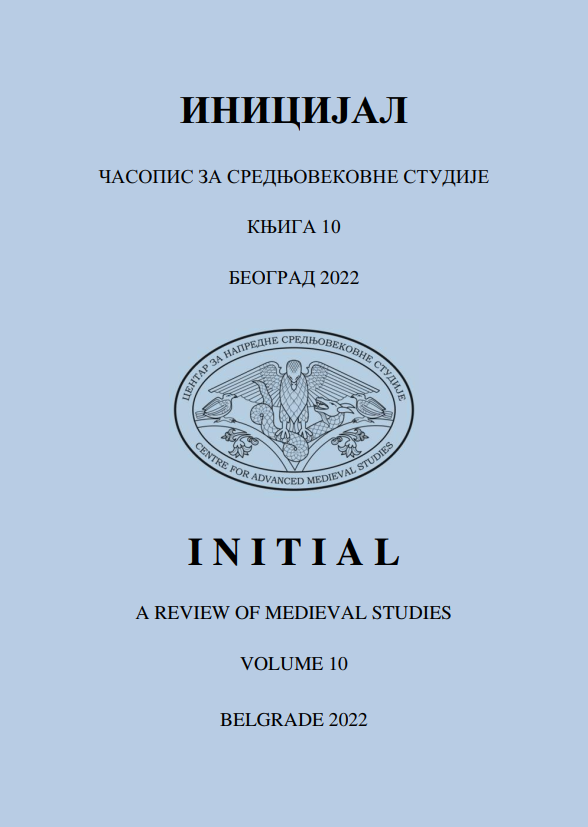ПОВЕЉА МОНАХИЊЕ КНЕГИЊЕ ЈЕВГЕНИЈЕ МАНАСТИРУ ВЕЛИКОЈ ЛАВРИ СВЕТОГ АТАНАСИЈА НА СВЕТОЈ ГОРИ
CHARTER OF THE NUN PRINCESS EUGENIA FOR THE MONASTERY OF THE GREAT LAVRA OF ST. ATHANASIOS ON THE MOUNT ATHOS
Author(s): Aleksandra FostikovSubject(s): History, Middle Ages, 13th to 14th Centuries
Published by: Центар за напредне средњовековне студије
Keywords: Princess Milica; nun Eugenia; Great Lavra; Paraćin; charter; Mount Athos; Serbia; middle ages
Summary/Abstract: Eugenia issued this charter in order to correct the mistake she made when she donated the land that belonged to the monastery’s metoh in the village and the market of Parakinov Brod, which was held by Zub and Radejko, to priest Sisoje, and with this act she returns it to the monastery. Despite the series of significant historical, geographical and diplomatic information that this act brings, such as mention of a visit by Eugenia to Sultan Bayezid I and the only written mention of the Županjevac monastery, its greatest importance rests on the facts that speak of the division of power within of the house of Lazarević, as well as the factual status, role and place of princess Milica, both before and after she became a nun, taking the monastic name of Eugenia. Beside the fact that it is Eugenia’s only known independently issued charter, which is also preserved in the original, this document is the only testimony of her title in the form of a princess-nun, which contains not only a secular title, but also her monastic status, while her signature, in the form of a nun-princess, is identical to the legend on her name seal. Finally, when talking about this parallel titling, it should be pointed out that Eugenia’s example is not the only one. Queen Jelena, the wife of King Vukašin, is also recorded with a double name and title; she is mentioned in the copies of the Bigor pomenik as Queen Jelisaveta the nun, and also as Jelisaveta the nun-Queen. And she, too, after taking monastic vows, appears in the ktetor inscription of her son, Prince Andrejaš, under both secular and church names, as Jelena (and) Jelisaveta. Since in both cases the wives of rulers, who had de facto power, were involved and obviously performed not only the role of regents, but also that of sovereigns, these cases indicate the need for further analysis of the role of women in the framework of the division of power.
Journal: Иницијал. Часопис за средњовековне студије
- Issue Year: 2022
- Issue No: 10
- Page Range: 151-168
- Page Count: 18
- Language: Serbian

